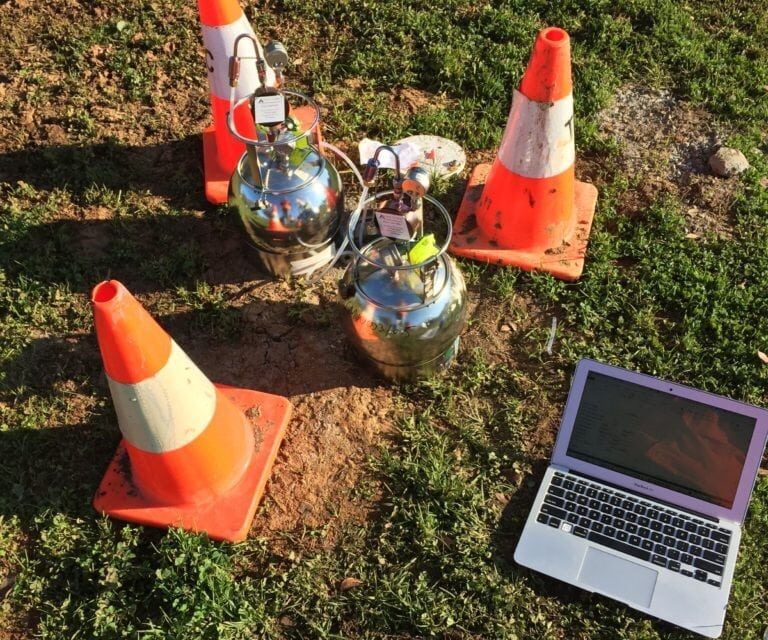Environmental stewardship is a critical aspect of corporate responsibility in business operations. Discover how to turn your company’s environmental challenges into opportunities for sustainable growth and enhanced corporate image. This guide provides comprehensive insights into identifying, mitigating, and managing environmental liabilities. It’s essential reading for anyone from small business owners to sustainability officers in large corporations, aiming to not only comply with regulations but also to achieve sustainable growth and a positive impact.
Understanding Environmental Liabilities: A Comprehensive Guide for Businesses
In the dynamic world of business, understanding and managing environmental liabilities is crucial. Environmental liabilities refer to the legal obligations a company faces regarding the environmental impacts of its operations. These liabilities stem from various sources, including environmental laws, business activities, and unforeseen environmental risks. To manage your environmental liabilities effectively, it’s essential to have a firm grasp of the underlying principles and potential impacts on your business.
- Identifying Environmental Risks: This involves understanding the specific environmental risks associated with your business activities. It includes assessing the potential for contamination, resource depletion, and ecological damage.
- Legal Obligations and Environmental Laws: Familiarize yourself with local, national, and international environmental regulations that apply to your business. This includes laws related to waste disposal, emissions, and resource usage.
- Financial Implications: Environmental liabilities can lead to significant financial costs, including fines, remediation expenses, and legal fees. Understanding these potential costs is essential for effective financial planning.
- Reputational Impact: Environmental mismanagement can harm a company’s reputation. Being responsible and proactive in managing environmental risks can enhance brand value and customer loyalty.
- Long-term Strategic Planning: Incorporating environmental risk management into long-term strategic planning can help in identifying and mitigating potential liabilities early, ensuring sustainable business practices.
Proactive Environmental Management: The Key to Minimizing Liabilities
Proactive environmental management is vital in minimizing liabilities. This approach involves regular due diligence and adherence to environmental practices that not only comply with regulations but also go beyond them. By proactively managing environmental risk, businesses can avoid the costly and reputation-damaging effects of environmental mishaps.
- Environmental Impact Assessment (EIA): Conduct EIAs for new projects or expansions to understand and mitigate potential environmental impacts.
- Sustainable Resource Management: Implement policies for sustainable use of resources, reducing the environmental footprint of your business activities.
- Regular Policy Review and Update: Regularly review and update environmental policies to align with evolving environmental laws and best practices.
- Stakeholder Engagement: Engage with stakeholders, including local communities, environmental groups, and regulatory bodies, to understand their concerns and collaborate on environmental initiatives.
- Emergency Response Planning: Develop and maintain an effective environmental emergency response plan to manage unforeseen environmental incidents.
Effective Strategies for Preventing Environmental Contamination
Preventing environmental contamination is more effective and less costly than addressing its aftermath. Here are some strategies businesses can employ:
- Employee Training: Ensuring that all employees understand and adhere to your company’s environmental practices is crucial.
- Implementing Sustainable Practices: Incorporating sustainable practices into your business model can significantly reduce the risk of environmental harm.
- Waste Management Protocols: Implement strict waste management protocols to prevent contamination of soil, water, and air.
- Innovative Technology Adoption: Invest in innovative technologies that minimize environmental impact, such as pollution control devices and renewable energy sources.
- Regular Compliance Audits: Conduct regular audits to ensure that business operations comply with environmental laws and regulations.
- Community Involvement and Education: Engage with the local community to educate and involve them in environmental protection initiatives.
- Continuous Improvement: Adopt a continuous improvement mindset to constantly seek better, more sustainable ways of operating that reduce environmental risk.
By integrating these strategies into your business practices, you can significantly reduce environmental liabilities, ensuring compliance, and promoting a culture of sustainability and responsibility.
Addressing Legacy Environmental Liabilities: A Practical Approach
Dealing with legacy environmental liabilities requires a comprehensive and strategic approach. These liabilities often arise from past business activities and can have long-term implications.
- Historical Site Analysis: Conduct a thorough analysis of historical site usage to understand the extent of potential environmental liabilities. This includes reviewing past industrial activities and their environmental impacts.
- Engaging with Environmental Experts: Consult with environmental consultants or engineers who specialize in legacy issues. Their expertise can guide the development of effective remediation strategies.
- Liability Estimation and Provisioning: Accurately estimate the financial implications of legacy environmental liabilities. This involves provisioning for potential remediation costs and legal liabilities.
- Community Consultation and Involvement: Engage with the local community to understand their concerns about legacy contamination issues. Effective communication can help in building trust and cooperation in remediation efforts.
- Sustainable Remediation Practices: Implement remediation practices that not only address the contamination but also promote sustainability, minimizing further environmental impact.
- Monitoring and Long-term Management: Establish a system for ongoing monitoring and management of remediated sites to prevent recurrence of environmental issues.
Navigating the Regulatory Landscape: Ensuring Environmental Compliance
Ensuring environmental compliance is crucial for businesses to operate sustainably and avoid legal repercussions. This involves understanding and navigating the complex landscape of environmental laws and regulations.
- Keeping Up-to-Date with Legislative Changes: Regularly update your knowledge of environmental laws and regulations. This includes staying informed about changes at local, national, and international levels.
- Building a Compliance Team: Establish a dedicated team responsible for ensuring environmental compliance. This team should be well-versed in environmental laws and business activities.
- Developing Compliance Protocols: Develop and implement a set of internal protocols and practices to ensure that all aspects of your business are compliant with environmental regulations.
- Training and Awareness Programs: Conduct training programs for employees at all levels to ensure they understand their roles in complying with environmental laws and managing environmental risk.
- Engaging in Policy Discussions: Participate in discussions and forums related to environmental policy. This can provide insights into future regulatory trends and enable your business to adapt proactively.
- Regular Environmental Audits and Reporting: Perform regular environmental audits to assess compliance and report findings to relevant authorities as required. This ensures transparency and accountability in environmental practices.
- Partnerships with Regulatory Bodies: Foster positive relationships with environmental regulatory bodies. This can aid in better understanding regulatory expectations and receiving guidance on compliance matters.
By diligently addressing legacy environmental liabilities and navigating the regulatory landscape, businesses can not only ensure compliance but also demonstrate their commitment to environmental stewardship and corporate responsibility.
The Strategic Advantage of Effective Environmental Liability Management
Effectively managing environmental liabilities transcends mere legal compliance; it’s a strategic imperative that significantly enhances a company’s reputation and sustainability. Understanding and addressing these liabilities is a multifaceted process involving a deep comprehension of potential environmental impacts, adoption of proactive environmental management strategies, vigilant addressing of legacy issues, and stringent compliance with evolving environmental laws.
Incorporating these elements into your business operations offers several strategic advantages. First, it positions your company as a responsible corporate citizen, enhancing your reputation among customers, investors, and the community. Such a reputation for environmental stewardship can open doors to new markets and partnerships, and also strengthen brand loyalty.
Secondly, by proactively managing environmental risks and adhering to environmental best practices, businesses can avoid the high costs associated with environmental clean-ups, legal fees, and non-compliance penalties. This proactive approach often leads to operational efficiencies and cost savings, as it encourages the adoption of more sustainable and resource-efficient processes.

Lastly, compliance with environmental laws is not static; it requires ongoing vigilance and adaptation to changing regulations. Staying ahead in this dynamic regulatory landscape demonstrates your commitment to corporate responsibility and ethical practices, which can be a significant differentiator in today’s competitive business world.
Engage with us to share your thoughts and experiences related to environmental management. Your insights and queries are invaluable in fostering a community of learning and proactive environmental stewardship. Additionally, if you’re seeking more information or guidance on managing your environmental responsibilities effectively, don’t hesitate to reach out to us. We are here to assist you with expert advice and tailored solutions that align with your specific needs. Whether it’s understanding complex environmental regulations, implementing sustainable practices, or addressing legacy environmental liabilities, our team of seasoned professionals is equipped to provide you with the support you need. Contact us to explore how we can collaborate to ensure your business not only complies with environmental laws but also contributes positively to environmental conservation and sustainability. Let’s work together towards a greener, more responsible future.


